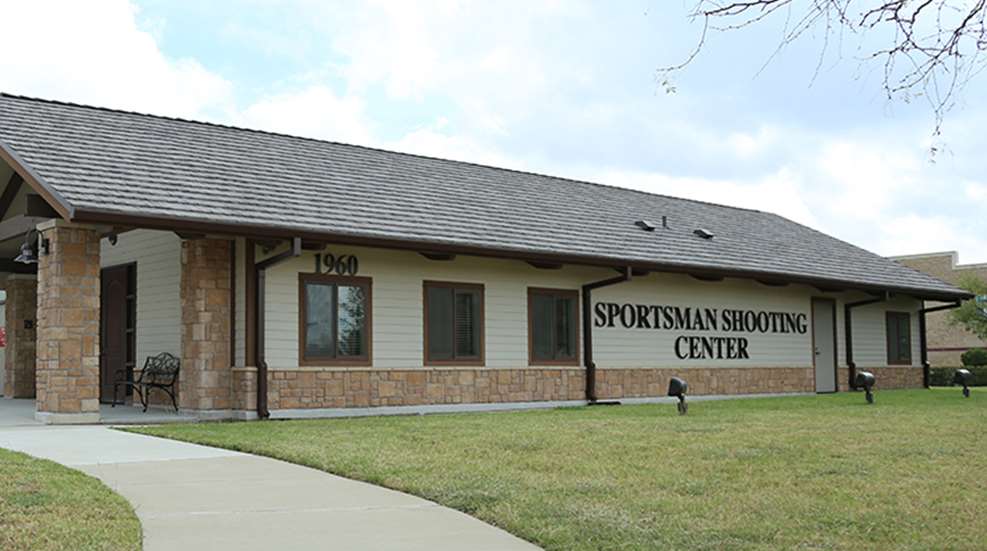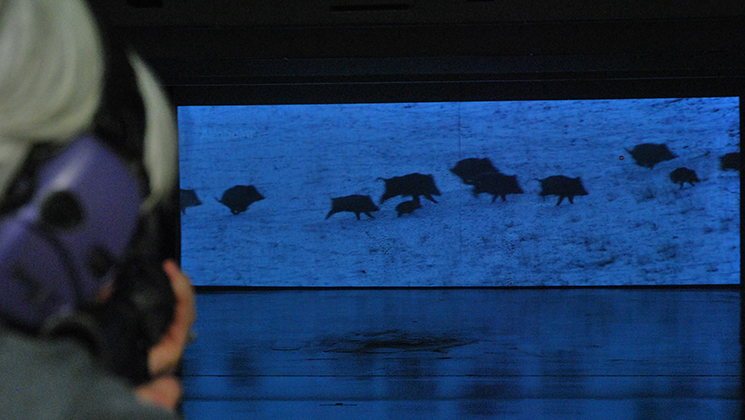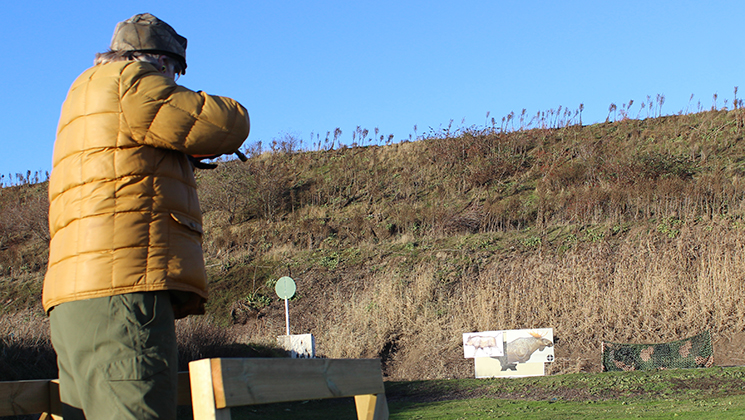
“Someday you’ll wish you’d taken these lessons more seriously,” my mother admonished. Her words still ring in my ears, and she was right. She was talking about dancing lessons and, today, I do wish I’d taken those lessons more seriously. But, at the age of 6, the impudence and ignorance of youth prevailed. My interest in shooting guns overrode my mother’s desire for me to dance or take art lessons. In spite of not heeding her desire for me to be a professional dancer (I coulda been somebody!) I’ve been pretty lucky when it comes to the experiences I’ve had, the places I’ve lived and the things I’ve done. But even so, there are still activities I do wish I’d learned correctly from the beginning. Take shooting, for example.
I can’t complain about the shooting opportunities I’ve enjoyed for most of my life. My father taught me to shoot at an early age, which was largely, and rightfully so, mostly about safety and common sense when handling firearms. I enjoyed taking advantage of whatever shooting opportunities came my way, which mostly involved hunting.
While still in my teens, my family moved to Kenya where my hunting and shooting interests were fully realized, eventually leading to a career as a professional hunter. In the African bush, I lived with a gun in my hands, or at least within reach of one, on a daily basis. I developed not only confidence but also proficiency with the guns I carried and upon which I relied. I was also in a position to advise anyone coming on safari to practice, practice and practice some more. But for practice to be effective it must reinforce good shooting habits, and for that to happen you must first learn the correct basics.
Awhile back, I wrote an article for AH that tackled shooting in general and included some tips about being ready for follow-up shots while hunting. It’s an excellent habit to develop, but it only comes with plenty of practice. Since I wrote that article, my own shooting education has been enhanced by some shooting lessons from which I’ve benefited. I just wish I could have had the benefit of those lessons earlier.
■■■
It all began with a call from Andrea Cerwinske, Aimpoint USA’s vice president of marketing and business development. She invited me to join a driven-game hunt in Sweden, hosted by Aimpoint and including partner sponsors Merkel, Norma, Land Rover of Sweden and Dogtech. I’d never experienced a European driven-game hunt and was curious about how it would be conducted. I imagined we’d be shooting at running game and, to be honest, I’ve always believed an animal should be standing—not running—before you take that first shot. My belief was based on thinking that accuracy was compromised when swinging the barrel at a moving target.
Over the years, I’ve witnessed many “Hail Mary” shots at running game that missed the mark more often than hit it. What I discovered is there is a method to shooting moving targets that removes much of the guesswork and takes the “hope-and-a-prayer” aspect out of it. I learned that with instruction comes understanding, and by adding practice to that, you build confidence. With confidence comes consistency, and with consistency comes accuracy.
Utilizing the right equipment fills another part of the equation. An accurate rifle, reliable ammo and a quality sighting system are essential for success.
In 1974, a small group of Swedish entrepreneurs started exploring ways to improve shooting accuracy on the run with the development of a new and innovative sighting system. Their goal was achieved by applying technology that allowed shooters to acquire a target quickly and hit moving targets in all weather and lighting conditions consistently and accurately. Their premise was based on a red-dot sighting system that made it easier to shoot accurately, even under the pressure of tracking a moving target.
By 1975, they had formed a company and introduced their first commercial sight called the Aimpoint Electronic. Today, 40 years later, with input from experienced hunters, marksmen and military firearm experts, the Aimpoint red-dot sight has evolved into a fast, rugged and efficient electronic small-arms sighting system used by more than 2 million hunters and shooters, and by police and military personnel worldwide.
Last October, I met Andrea at the American Sportsman Shooting Center (ASSC) in Dallas, the first and only facility of its kind in the United States. It is described as a “state-of-the-art shooting and instructional facility that provides a unique, exciting and effective learning experience.”
To be sure, this is not your typical shooting range. This is an indoor, climate-controlled 30-yard range with a BKE Hitcom system that allows shooters to engage life-size game targets that were actually filmed in their natural environments in Africa, Europe and North America. (BKE is the leading manufacturer of state-of-the-art computer-controlled interactive video systems.) The video presentation is projected on a 12-by-30-foot movie screen at which you shoot with live rounds in any caliber from .17 HMR to .505 Gibbs. In Europe, shooting cinemas are commonly located and used in areas where there is an interest in hunting and shooting sports.
I was fascinated to learn the ASSC shooting cinema (sportsmanshootingcenter.com) allows you to practice within real-life virtual situations using the same rifle and ammo with which you will hunt. The experience is action-packed as you shoot at dynamic game that is running, walking and even standing. Each of your shots is electronically recorded, highlighted and scored. Experienced instructors help you develop shooting skills and master shot placement.
Before the fun in the cinema range begins, shooters visit a 100-yard tunnel beneath the facility to confirm rifle zero. (An ADA-compliant elevator ensures accessibility to shooters who can’t navigate the stairs.) The tunnel is equipped with an Olympic-grade SIUX acoustic targeting system, which replaces retrieval of paper targets with electronic scoring. Shot-groups are displayed on a flat-screen monitor right next to you. A computer performs instant analysis on group size and deviation. A laser printer produces your test targets and labels them for different loads and ballistic performance.
After zeroing your rifle, you move back upstairs to the shooting cinema where the real fun begins. During our range session, we used Merkel RX Helix range rifles fitted with Aimpoint Micro H-2 red-dot sights and loaded with Norma ammo—the same combination we would use in Europe. My choice of caliber was .30-06, one I have used often and for which I have much respect. The load was Norma’s 180-grain Plastic Point.
An important point that is emphasized over and over again is to always keep both eyes open while aiming and shooting at moving targets. Judging distance accurately is also as important, as well as remembering to begin tracking the target from behind and below your point of aim (POA). As you reach your anticipated POA, you should be completing your trigger squeeze. This, of course, is a highly simplified description of the method we learned, but it sums up what you’re trying to achieve.
With repetition comes familiarity, and it was soon clear how much more simple aiming became with a superimposed red-dot serving as the reference point vs. traditional iron sights where three elements must all be lined up. A red-dot sight presents only two elements to deal with—the dot and the target. But the one thing that does not change, no matter what sighting system you use, is the trigger squeeze. That still must be accomplished without a yank or jerk.
Should you like to receive some shooting instruction on hitting moving targets, you may bring your own rifle and ammo along with a photo ID. All necessary tools and equipment for fitting and adjusting optics are also available at the range, as well as rifle rests, shooting sticks and shooting bags.
Any age can shoot, but it is at the discretion of the instructors who will base their decision on physical stature, capability and maturity. Membership is available for those who are interested; it provides several benefits, including substantial discounts, range gear and free guest passes.
During my visit, we practiced only with the Merkel RX Helix rifles preparing for the hunt and did not have time to shoot the carbine course or other scenarios. (In May, ASSC expanded its operations to include handguns. This new experience is located only 13 yards from the cinema screen making the scenarios come to life.)
After receiving some basic instruction, I was amazed at how quickly my shooting improved. I also felt much more prepared to face whatever challenges awaited me in Swedish forests.

■■■
Our group of shooters assembled in Malmö, Sweden, on a gray December day, and to my delight, the temps were unseasonably warm, hovering just above freezing. It was an international group with one thing in common: all were experienced and accomplished shooters. Should you have the least little doubt in your shooting prowess, standing amongst such an illustrious group can be intimidating when the guns and ammo get handed out and the shooting begins. As I did back at the ASSC in Dallas, I chose Merkel’s Helix RX rifle in .30-06, stoked with Norma’s 180-grain Plastic Point load.
I was pleased to learn our first day would entail a daylong refresher course at a shooting cinema and the second day would include a regimen of practical shooting challenges at an outdoor range with plenty of moving-target scenarios. The outside range activities were the same practical shooting routines Swedish citizens and residents must complete to qualify for a Swedish hunting license. In addition to the shooting itself, the outside exercises emphasized correct animal identification and rigid firearm safety.
Our objective for the next two days of hunting was simple, yet uncompromising: everyone returns home safely and only designated species should be taken with as few animals wounded or lost as possible. The other critical and constant concern during a driven-game shoot is the safety of the beaters and their dogs as they move toward you during the drive. Everyone was on high-alert to make sure no errant shots were taken.
Throughout Europe, and certainly Sweden, if you own land, you also own the game that’s on it. This gives landowners incentive for looking after their wildlife; management of the habitat and game is taken very seriously. Species that occur on most of the estates include moose, red deer, fallow deer and wild boar. The payoff for the landowner comes during the hunting season when game can be taken off the properties. Meat, hides, horns, antlers and tusks are all commercially viable, which relates to income for the landowner. This is why marksmanship and game ID is so important, and why landowners want experienced shooters to ensure drives will be safe, successful and productive.
From Malmö we drove a couple of hours north in the latest sport-utility vehicles from Land Rover of Sweden. Driving in Sweden, like the States, takes place on the right side of the road, so it took virtually no adjustment for any of us to drive there. We all had a chance to try out brand-new Land Rovers and Range Rovers, which were a delight to drive, both on-pavement and off-road, and easy to navigate through snowy and rainy conditions.
European driven-game hunts typically take place on large private estates where the management program determines which species and how many animals of each sex can be taken on any given drive. Interestingly, a variety of species often thrives together on these estates. When the time comes, you must be ready and certain of your shot. It is critical that you are able to quickly ID an animal and determine its sex before you pull the trigger—there can be a significant fine for shooting the wrong animal. If a trophy male animal is taken, there is a value attributed to the size of the head and the hunter is charged a fee in order to keep the tusks, horns or antlers. When the action begins, it is often fast and furious.
The stand from which you shoot is determined by draw, and the “luck of the draw” really does apply to a driven-game shoot—in both good and bad ways (bad only meaning that no game is encountered). There are normally four drives per day—two in the morning with a welcome and hearty hot lunch served in the field, followed by two more drives in the afternoon. So if you don’t have much luck on one drive, the odds are good for the next drive—or the one after that.
The results of our two days of shooting would have had Uncle Ted claiming that we had “whacked ’em and stacked ’em.” Fallow deer and wild boar dominated the list of game taken on most of our drives. Moose and red deer enjoyed a protected status on the properties we hunted, although both moose and red deer were spotted by several hunters.
At the conclusion of two exciting days, the landowners were satisfied, the hunt masters were pleased, and our host and sponsors were especially happy that we had performed so well. We had clearly put their products to good, practical and effective use. Those who enjoy and appreciate accurate marksmanship with plenty of action will thoroughly enjoy the European driven-game experience. But, before you go, be sure to prepare. The ASSC, a totally new and fascinating endeavor for me, is a good place to do that.





































